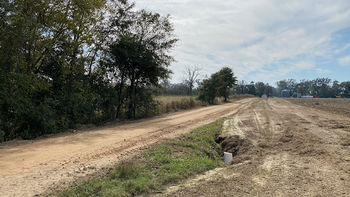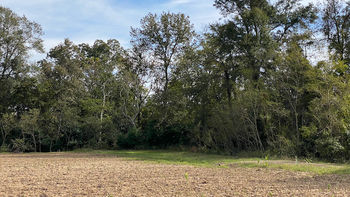Natchez Fort
|
HistoryNatchez Fort was the site of the last major battle between the Natchez Indians and the French in January 1731. 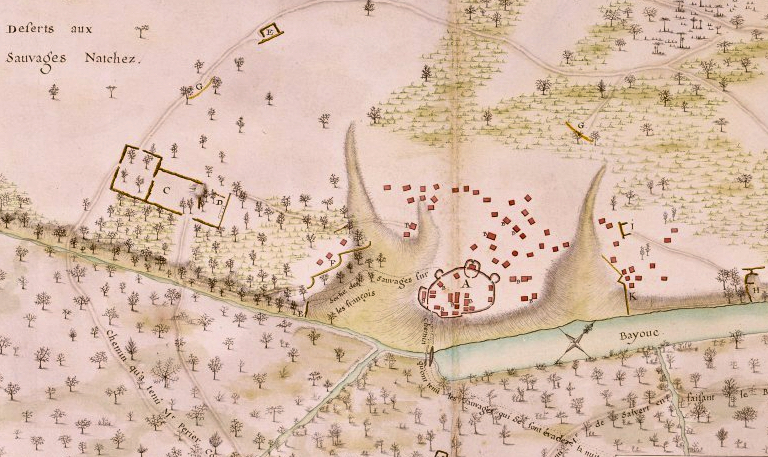
The prelude to the battle started with an escalating series of events and the deaths of two of the Natchez leaders of the ruling class, the Tattooed Serpent in 1725 and Little Sun Chief. Both of these rulers were stalwart allies of the French and their deaths allowed British influence to create anti-French feelings. When the French demanded the Natchez abandon a complete village in November 1729 so they could create a French tobacco plantation the Natchez rose up and massacred the garrison of nearby Fort Rosalie killing some 229 French men, women, and children and capturing a number of French women, children and a number of African slaves Fearing French retaliation for the massacre, the Natchez built two European-style palisaded forts at their Grand Village near the destroyed Fort Rosalie. In these forts, Fort Valeur and Fort Farine, they mounted cannon taken from Fort Rosalie. The French and their Choctaw allies took their time in approaching the Natchez forts because of the cannon fire, The Choctaw began to negotiate separately with the Natchez and they struck a deal whereby the Natchez surrendered all the French captives including the slaves and shared the plunder from Fort Rosalie. In return, the Natchez were permitted to slip away on the night of 25-26 Feb 1730. 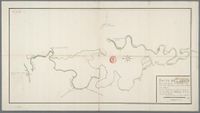 The Natchez traveled to the site of their Natchez Fort (about 35 road miles today) and from there conducted guerrilla warfare against the French and their Indian allies during the rest of 1730. French army reinforcements arrived in New Orleans on 16 Sep 1730 and the French governor of Louisiana, Étienne de Perier and his brother Antoine Alexis de Perier de Salvert, organized a retaliatory expedition against the Natchez that departed New Orleans on 7 Dec 1730.   The expedition reached the Natchez Fort on 20 Jan 1731 and established a siege compound about 260 meters west of the fort. A siege battery with cannons and wooden mortars to lob grenades into the fort was put in place and the siege began on 21 Jan 1731. The wooden mortars were effective but fragile and one of them broke its bands. The French attacked with musketry, grenades, and artillery fire. They began constructing a trench toward the fort and in the process took over an outer redoubt that was enfilading their works and connected it to the trench head. The battle lasted from the 21st to the 25th of January. On the 25th, about 45 men and 450 women and children surrendered along with the wife of the Great Chief and her family. On the 26th and 27th, the expedition worked to demolish the fort and burn the remains. An unknown number of Natchez escaped during the battle primarily under the cover of heavy rainstorms that lasted for three days. Some suggest that the number could have been in the hundreds. The captives were all sent to the same prison in New Orleans where many died. The remainder were sold into slavery in St. Domingo.
Current statusNatchez Fort Site Archeological Site 16CT18. No visible remains of the fort. The site of the fort is associated with the Battleground Plantation National Historic Site which gets its name from the Battle for the Natchez Fort. The existing plantation house dates back to the 1820s and it is now clad in 1850s clapboard and has a newer roof. The original dog trot square log construction still exists under the clapboard. 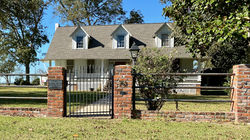 A 1936 scholarly article by John A. Green provided a modern-day look at the available documents and set the stage for pinpointing the site location and recovering artifacts. In the 1970s a Mr. Jack Shaffer began searching for the fort's location on land owned by the Ditto and Battleground Plantations. In the 1980s the owners of the fort site allowed Shaffer and his son to surface collect the site as they prepared it for agricultural use. Shaffer and his son recovered and documented a vast array of artifacts including ten sets of human remains thought to lie at the center of the fort. Mr. Shaffer donated his entire collection of artifacts from the Natchez Fort site to the Louisiana Division of Archaeology in March of 2016.
See Also: Sources:
Links: Visited: 3,5 Nov 2020
|
